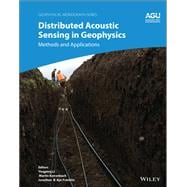Distributed Acoustic Sensing (DAS) is a technology that records sound and vibration signals along a fiber optic cable. Its advantages of high resolution, continuous, and real-time measurements mean that DAS systems have been rapidly adopted for a range of applications, including hazard mitigation, energy industries, geohydrology, environmental monitoring, and civil engineering.
Distributed Acoustic Sensing in Geophysics: Methods and Applications presents experiences from both industry and academia on using DAS in a range of geophysical applications.
Volume highlights include:
- DAS concepts, principles, and measurements
- Comprehensive review of the historical development of DAS and related technologies
- DAS applications in hydrocarbon, geothermal, and mining industries
- DAS applications in seismology
- DAS applications in environmental and shallow geophysics
The American Geophysical Union promotes discovery in Earth and space science for the benefit of humanity. Its publications disseminate scientific knowledge and provide resources for researchers, students, and professionals.









